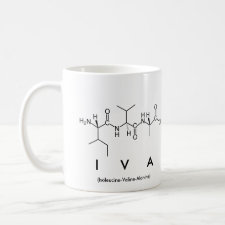
Authors: Pascale M, De Girolamo A, Visconti A, Magan N, Chianella I, Piletska EV, Piletsky SA
Article Title: Use of itaconic acid-based polymers for solid-phase extraction of deoxynivalenol and application to pasta analysis.
Publication date: 2008
Journal: Analytica Chimica Acta
Volume: 609
Issue: (2)
Page numbers: 131-138.
DOI: 10.1016/j.aca.2008.01.004
Alternative URL: http://www.sciencedirect.com/science/article/B6TF4-4RJK140-2/2/7ec37a3ebd54eeecf9ebba32d0f524cc
Abstract: Molecular modelling and computational design were used to identify itaconic acid (IA) as a functional monomer with high affinity towards deoxynivalenol (DON), a Fusarium-toxin frequently occurring in cereals. IA-based polymers were photochemically synthesised in dimethyl formamide (porogen) using ethylenglycol dimethacrylate as cross-linker and 1,1'-azo-bis(cyclohexane carbonitrile) as initiator, and the relevant binding interactions with DON in solvents with different polarity were investigated. The performances of the non-imprinted IA-based polymer (blank polymer, BP) and the corresponding molecularly imprinted polymer (MIP) were compared using DON as a template. Both BP and MIP were able to bind about 90% DON either in toluene, water or water containing 5% polyethylene glycol. Non-imprinted polymers with different molar ratios of IA to cross-linker were evaluated as adsorbents for solid-phase extraction (SPE) clean-up and pre-concentration of DON from wheat and pasta samples prior to HPLC analysis. Samples were extracted with PBS/0.1 M EDTA solution and cleaned up through a cartridge containing blank IA-based polymer. The column was washed with PBS (pH 9.2) and the toxin was eluted with methanol and quantified by reversed-phase HPLC with UV detector (λ = 220 nm), using methanol:water:acetic acid (15:85:0.1, v/v/v) as the mobile phase. Effective removal of matrix interferences was observed only for pasta with DON recoveries higher than 70% (RSD < 7%, n = 3) at levels close to or higher than EU regulatory limit
Author keywords: deoxynivalenol, molecular modelling, Itaconic acid, computational design, Cross-linked sorbent, Solid-phase extraction



Join the Society for Molecular Imprinting

New items RSS feed
Sign-up for e-mail updates:
Choose between receiving an occasional newsletter or more frequent e-mail alerts.
Click here to go to the sign-up page.
Is your name elemental or peptidic? Enter your name and find out by clicking either of the buttons below!
Other products you may like:
 MIPdatabase
MIPdatabase









